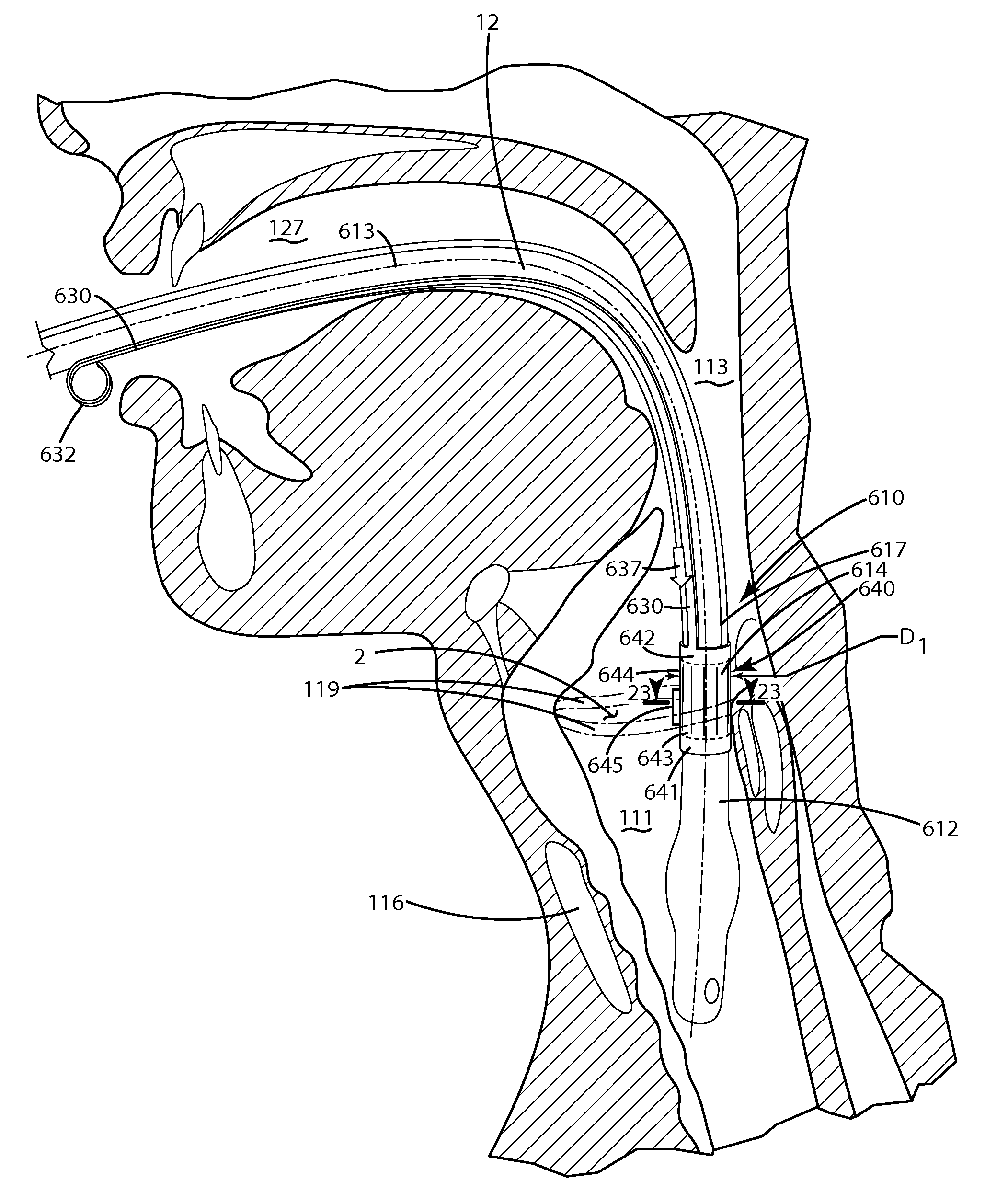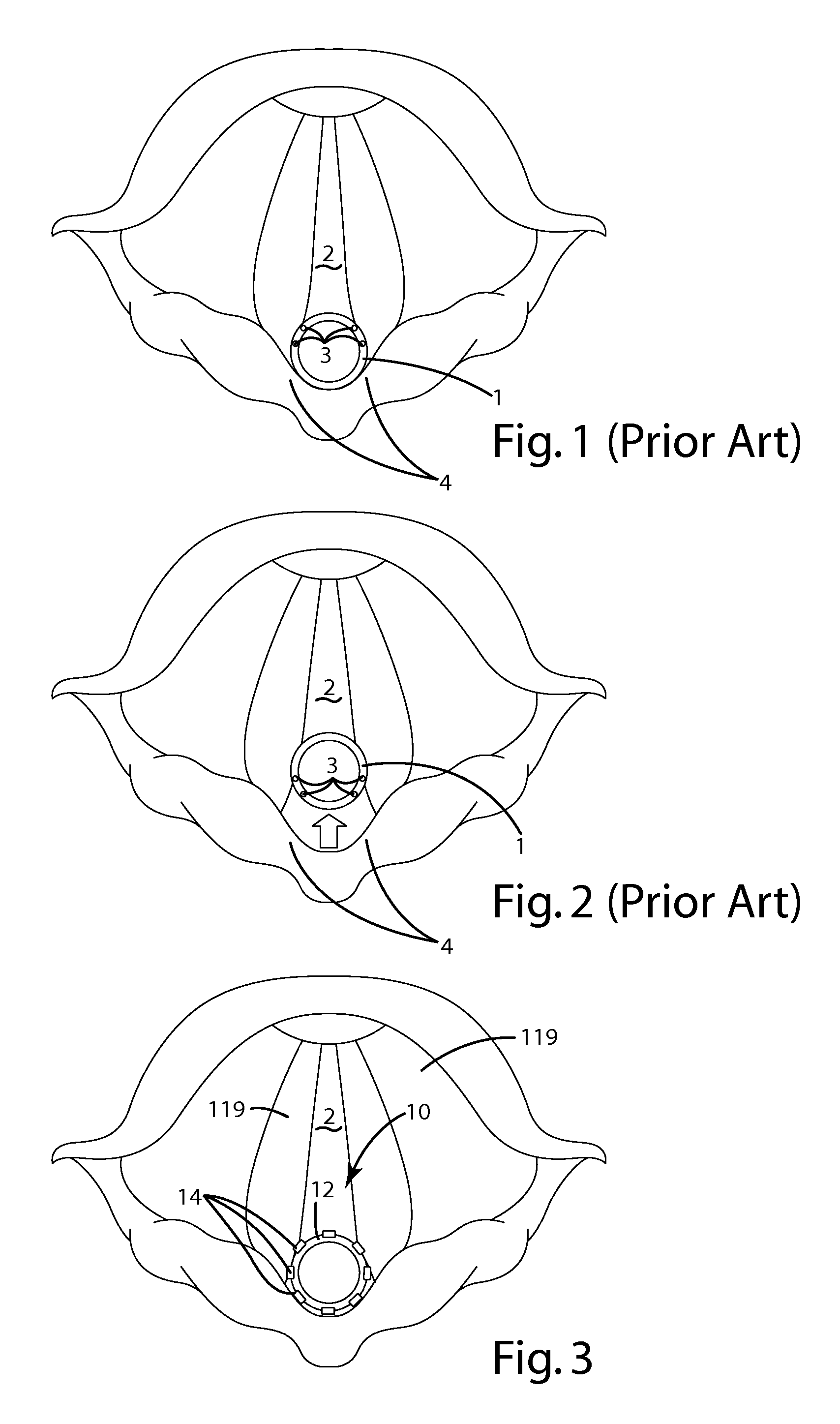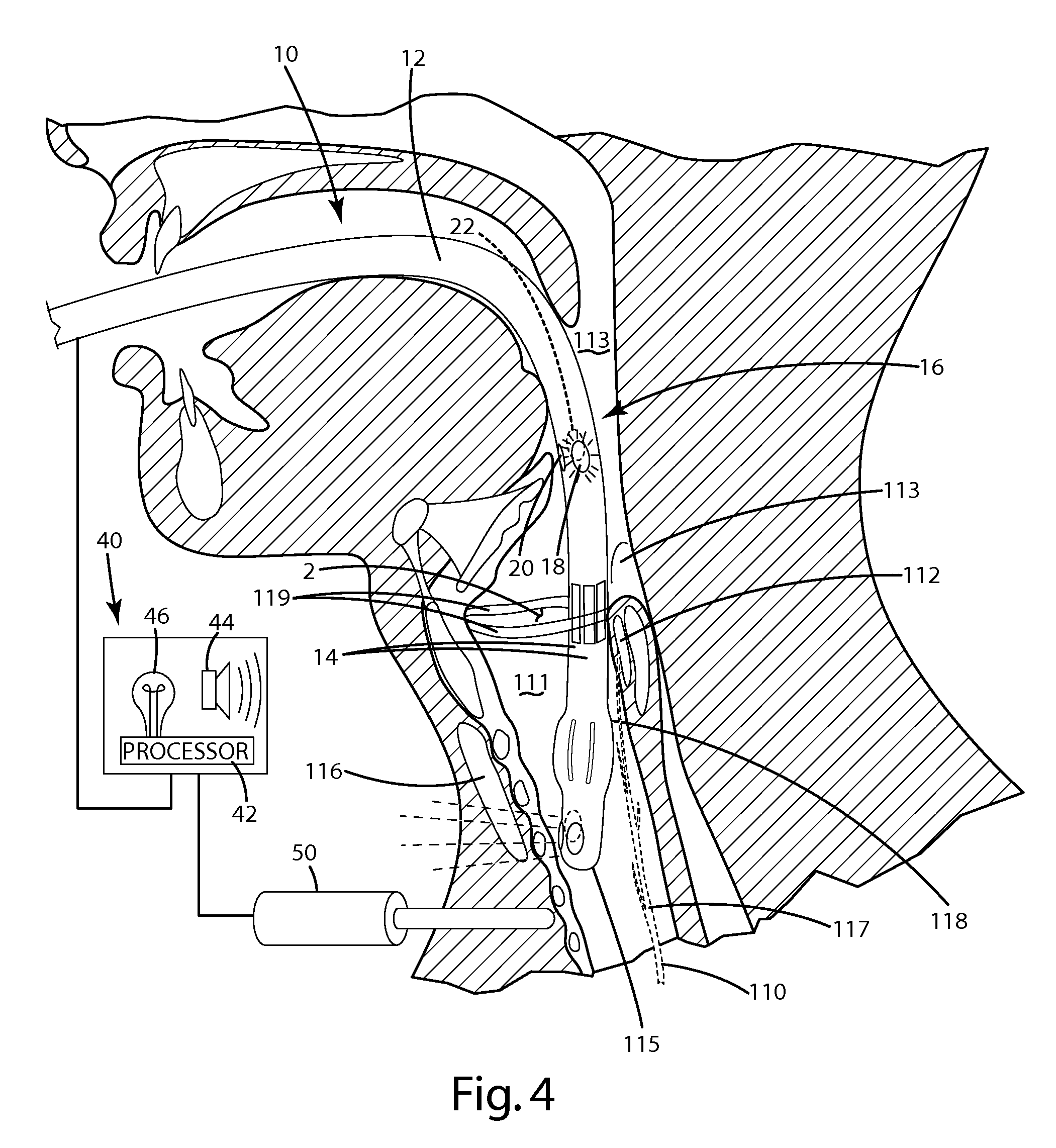Nerve monitoring device
a technology of nerve monitoring and monitoring device, which is applied in the field of nerve monitoring, can solve the problems of speech difficulty, partial or total vocal cord paralysis, small and difficult to identify, etc., and achieve the effect of efficient monitoring of a variety of nerves within a subject's body
- Summary
- Abstract
- Description
- Claims
- Application Information
AI Technical Summary
Benefits of technology
Problems solved by technology
Method used
Image
Examples
Embodiment Construction
[0065]A current embodiment of the device for monitoring nerves to detect nerve and / or muscle activity is illustrated in FIGS. 3-4 and 6 and generally designated 10. The device 10 can include a cannula 12, sensor 14 and an optional output element 40, as well as an optional electrical probe 50.
[0066]In general, the sensor 14 and probe 50 can be in communication with the output element 40. As shown in FIG. 4, a surgeon can engage the probe at a location where a target nerve, such as a recurrent laryngeal nerve 110, is suspected to be located. The probe 50 provides an electrical impulse, which in turn can be transmitted through the target nerve, to an associated target muscle, such as a laryngeal muscle, for example, posterior cricoarytenoid muscles 112 and / or the vocal cords 119. The subsequent activity of the target muscle can be measured or otherwise sensed by the sensors 14, and output to the output element 40 based on the measured response. The output element 40 can output informat...
PUM
 Login to View More
Login to View More Abstract
Description
Claims
Application Information
 Login to View More
Login to View More - R&D
- Intellectual Property
- Life Sciences
- Materials
- Tech Scout
- Unparalleled Data Quality
- Higher Quality Content
- 60% Fewer Hallucinations
Browse by: Latest US Patents, China's latest patents, Technical Efficacy Thesaurus, Application Domain, Technology Topic, Popular Technical Reports.
© 2025 PatSnap. All rights reserved.Legal|Privacy policy|Modern Slavery Act Transparency Statement|Sitemap|About US| Contact US: help@patsnap.com



